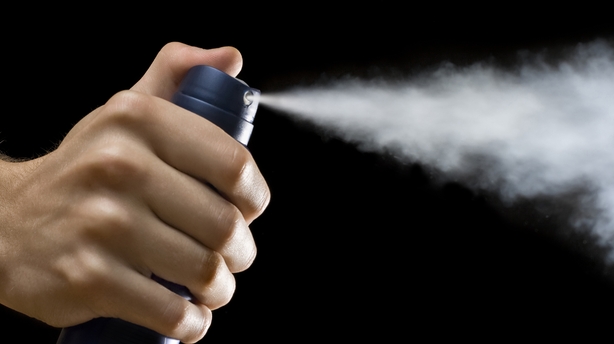Readers of a certain age will no doubt remember the 1980s environmental campaigns alerting us to the damage we were inflicting on the ozone layer with our hairsprays, our deodorants and even discarded refrigerators.
These everyday products contained chemicals by the tongue-twisting name of "chlorofluorocarbons".
Scientists had recently discovered that CFCs were burning a hole in the atmosphere's ozone, allowing the sun’s ultraviolet radiation through and causing harm to humans and all living things.
Environmentalists called it a crisis that needed immediate action. Scientists predicted skin cancer rates would sky-rocket. Politicians agreed that the cost of doing nothing was far greater than the price of change.
And as the 1980s came to a close, a landmark international agreement - the Montreal Protocol - was struck, to phase out the use of CFCs in domestic and industrial products (later amended to ban hydrofluorocarbons too.)
It went on to become the first environmental deal in the history of the United Nations to reach universal ratification.
According to a new UN report, it has worked - the hole in the ozone layer is steadily shrinking and is set to heal by the middle of the century. But unfortunately - for the planet - it was also the last deal to reach universal ratification.

Campaigners today wonder why world leaders were able to come together 40 years ago to save the world from impending disaster and yet can’t seem to act today to address global warming - despite increasingly desperate appeals.
The UN Secretary General, António Guterres, heads to Davos this week where he will no doubt, once again, sound the alarm on what he has previously called the "the highway to climate hell".
"Humanity has a choice," he warned last year.
"Cooperate or perish. It is either a Climate Solidarity Pact, or a Collective Suicide Pact," he said.
So what is the difference between now and then?
Certainly, scepticism about the environmental impact of human behaviour was alive and well in the 1980s too.
The chemical industry poured doubt on the CFC-ozone connection.
Popular figures, like America’s conservative talk-show host, Rush Limbaugh, took up the baton and ran with it, calling it a scam by "dunderhead alarmists and prophets of doom".
In the international community, American and Canadian scientists spearheaded the campaign that would eventually turn into the Montreal Agreement. But Europe and Japan, where most of the ozone-killing products were made, pushed back.
Famously, representatives of the French aerosol industry lobbied against the proposed ban on CFCs, claiming that French women would never accept inferior hair products made with other chemicals.
Some speculate that the Montreal Protocol succeeded because prominent world leaders at the time understood the science and personally grasped the need for urgent action. Margaret Thatcher, who was the then British prime minister, for example, had studied chemistry and lent her weight to the ozone-saving cause.

Meanwhile the occupant of the White House, president Ronald Reagan, had himself suffered from skin cancer and was, therefore, only too aware of the harmful effects of sun exposure.
But insiders believe that the real change came when chemical industry stakeholders saw the writing on the wall, with public and governmental pressure rising.
"They started out in the 70s and early 80s just like the fossil fuel industry - deny, deny, attack your critics, organise an AstroTurf campaign to support not doing anything," said David Doniger, one of the architects of the Montreal Protocol, now a director at the Natural Resources Defense Council in Washington DC.
"But by the mid-80s, they concluded - especially when the ozone hole appeared - that they were going to get run over," he said.
Mr Doniger recalled one industry lobbyist telling him that they had decided "it was better to be at the table than on the menu".
So what are the lessons from Montreal for today’s world leaders?
Here at the United Nations headquarters in New York, climate is moving up the agenda.
In 2021, Ireland which was then on the Security Council, got together with Niger - one of the countries most adversely affected by rising temperatures - and tabled a Security Council resolution to acknowledge climate change as a threat to international peace and security.
The resolution failed - vetoed by Russia and voted against by India - but diplomats from Ireland and Niger believe their efforts at least set the tone for future discussions.
But as with the ozone layer debate, there’s plenty of pushback.
In the United States, for example, a trend called "rolling coal" has caught on among some motorists.
That’s where someone modifies a diesel engine so that it spews out thick, black smoke every time they accelerate.
You couldn’t get a more visual rebuke to the climate change movement.
Nevertheless, Mr Doniger believes the fossil fuel lobby which he described as "dragging its knuckles" is waking up to the energy transition that’s already under way - much like the chemical companies of the 1980s.
"We are getting to a real turning point where everybody understands that climate change is harming them now, not just some time in the future in some place far away," he said.
And the lessons from the Montreal Protocol?
"One lesson is that countries can cooperate to save the climate," said David Doniger.
"We know we can do it," he added, "because we did it before."
Listen to World Report programmes here
We need your consent to load this rte-player contentWe use rte-player to manage extra content that can set cookies on your device and collect data about your activity. Please review their details and accept them to load the content.Manage Preferences








